Do you have a question about the Toyota 2003 MATRIX and is the answer not in the manual?
Explains the types of warnings and their appearance in the manual.
Describes the meaning of the universal safety symbol used in the manual.
Outlines the limited warranties covering a new vehicle.
Details the owner's duty to ensure specified maintenance is performed.
Discusses the use of non-genuine parts and their potential impact on warranty.
Introduces the basic layout and functions of vehicle instruments and controls.
Details the operation and functionality of vehicle keys and doors.
Details how to operate the power window on the driver's door.
Explains how to operate the power windows for all passengers.
Explains the procedure for locking and unlocking the back door with the vehicle's key.
Details the steps to open the glass hatch using the vehicle's key.
Explains how to open the glass hatch using the dedicated opener switch.
Describes how the alarm system activates when a threat is detected.
Explains how the system automatically resets the alarm after it has stopped.
Details the methods available to stop the vehicle's alarm system.
Describes how to slide the moon roof open or closed.
Explains how to tilt the moon roof up or down.
Covers the operation and adjustment of seats, seat belts, steering wheel, and mirrors.
Details the operation and adjustment of the vehicle's front seats.
Provides essential safety guidelines for using seat belts correctly.
Provides critical safety information and precautions for using child restraint systems.
Explains how to adjust the rear view mirror using the remote control.
Details how to use the vanity mirror on the driver's side.
Explains how to use the vanity mirror on the front passenger's side.
Covers the operation of exterior and interior lights, wipers, and defogger systems.
Details how to turn on and operate the vehicle's headlights.
Describes the function and operation of the daytime running light system for US models.
Explains the automatic interior lighting function upon door opening.
Introduces the vehicle's gauges, meters, and service reminder systems.
Covers the operation of the ignition switch, transmission, and parking brake.
Explains the functions of the different positions on the automatic transmission selector lever.
Explains how to activate the cruise control system.
Introduces the vehicle's car audio system.
Explains how to adjust the audio system's tone and balance settings.
Provides information about the vehicle's radio antenna.
Details the operation and care of the cassette player.
Offers important notices for correct audio system operation.
Discusses common issues and factors affecting radio reception.
Introduces the vehicle's air conditioning system and its components.
Describes how to access the upper storage tray in the console box.
Details how to access the main compartment of the rear console box.
Details the operation of both front and rear cup holders.
Explains how to use the seatback tables for the front passenger and rear seats.
Provides recommendations for breaking in a new vehicle to ensure longevity.
Covers the recommended fuel types and quality considerations for the vehicle.
Explains normal engine oil consumption and factors affecting it.
Details the vehicle's brake system, including the booster and ABS.
Offers guidelines for safely stowing luggage and cargo in the vehicle.
Discusses the different types of tires and their performance characteristics.
Details the recommended fuel type and octane rating for the vehicle.
Explains why engines consume oil during normal operation.
Emphasizes the necessity of regularly checking the engine oil level.
Explains the function of the brake booster in assisting braking effort.
Describes the anti-lock brake system and its warning light indicator.
Explains the location and importance of the vehicle identification number (VIN).
Details the location and significance of the engine number.
Outlines the essential checks to perform before starting the vehicle's engine.
Provides step-by-step instructions for starting the vehicle's engine.
Offers advice for safe and effective driving in different road and weather conditions.
Provides specific tips for operating the vehicle in four-wheel drive mode.
Offers advice for safe driving and vehicle preparation during winter conditions.
Explains the procedures and precautions for dinghy towing the vehicle.
Provides comprehensive information and precautions for towing a trailer with the vehicle.
Offers tips for improving fuel economy and extending vehicle life.
Lists pre-cranking checks and procedures before attempting to start the engine.
Explains the normal procedure for starting the vehicle's engine.
Details dinghy towing procedures for automatic transmission models.
Explains dinghy towing procedures for manual transmission models.
Details the critical weight limits that must be adhered to when towing a trailer.
Provides an introduction to do-it-yourself maintenance procedures.
Shows a labeled diagram of the vehicle's engine compartment.
Shows the locations of the fuse boxes within the vehicle.
Offers essential safety precautions for performing DIY maintenance.
Lists necessary parts and tools for common do-it-yourself maintenance tasks.
Details the correct placement of the jack for safe vehicle lifting.
Lists simple checks to perform when the vehicle will not start.
Explains the procedure for starting an engine that may be flooded.
Offers specific precautions for tires used on four-wheel drive models.
Explains the importance and procedure for rotating tires to ensure even wear.
Offers precautions and tips for maintaining aluminum wheels.
Provides guidance on selecting appropriate snow tires for the vehicle.
Details the procedure for installing tire chains on the vehicle's tires.
Covers maintenance procedures related to the vehicle's electrical components.
Lists crucial safety precautions when working with the vehicle battery.
Describes how to inspect the exterior condition of the battery.
Provides essential safety precautions for recharging the vehicle battery.
Offers advice and methods for preventing corrosion on the vehicle.
Provides instructions for properly washing and waxing the vehicle to maintain its appearance.
Details procedures for cleaning the vehicle's interior surfaces.
Provides cleaning instructions for vinyl upholstery.
Details how to clean the vehicle's carpets.
Explains how to clean the vehicle's seat belts.
Refers to the scheduled maintenance guide for specific service intervals.
Recommends authorized Toyota dealerships for professional service.
Provides detailed dimensions and weight specifications for the vehicle.
Details engine oil selection criteria and lubrication specifications.
Lists the recommended tire sizes and inflation pressures for the vehicle.
Specifies the correct torque for tightening wheel nuts.
Refers to additional tire information found in Section 7-2.
Details the fuses and their corresponding circuits for Type A fuse box.
Explains the procedure for reporting safety defects to NHTSA and Toyota.
Provides information on understanding uniform tire quality grading.
Summarizes essential information typically found at a gas station.
Explains the types of warnings and their appearance in the manual.
Describes the meaning of the universal safety symbol used in the manual.
Outlines the limited warranties covering a new vehicle.
Details the owner's duty to ensure specified maintenance is performed.
Discusses the use of non-genuine parts and their potential impact on warranty.
Introduces the basic layout and functions of vehicle instruments and controls.
Details the operation and functionality of vehicle keys and doors.
Details how to operate the power window on the driver's door.
Explains how to operate the power windows for all passengers.
Explains the procedure for locking and unlocking the back door with the vehicle's key.
Details the steps to open the glass hatch using the vehicle's key.
Explains how to open the glass hatch using the dedicated opener switch.
Describes how the alarm system activates when a threat is detected.
Explains how the system automatically resets the alarm after it has stopped.
Details the methods available to stop the vehicle's alarm system.
Describes how to slide the moon roof open or closed.
Explains how to tilt the moon roof up or down.
Covers the operation and adjustment of seats, seat belts, steering wheel, and mirrors.
Details the operation and adjustment of the vehicle's front seats.
Provides essential safety guidelines for using seat belts correctly.
Provides critical safety information and precautions for using child restraint systems.
Explains how to adjust the rear view mirror using the remote control.
Details how to use the vanity mirror on the driver's side.
Explains how to use the vanity mirror on the front passenger's side.
Covers the operation of exterior and interior lights, wipers, and defogger systems.
Details how to turn on and operate the vehicle's headlights.
Describes the function and operation of the daytime running light system for US models.
Explains the automatic interior lighting function upon door opening.
Introduces the vehicle's gauges, meters, and service reminder systems.
Covers the operation of the ignition switch, transmission, and parking brake.
Explains the functions of the different positions on the automatic transmission selector lever.
Explains how to activate the cruise control system.
Introduces the vehicle's car audio system.
Explains how to adjust the audio system's tone and balance settings.
Provides information about the vehicle's radio antenna.
Details the operation and care of the cassette player.
Offers important notices for correct audio system operation.
Discusses common issues and factors affecting radio reception.
Introduces the vehicle's air conditioning system and its components.
Describes how to access the upper storage tray in the console box.
Details how to access the main compartment of the rear console box.
Details the operation of both front and rear cup holders.
Explains how to use the seatback tables for the front passenger and rear seats.
Provides recommendations for breaking in a new vehicle to ensure longevity.
Covers the recommended fuel types and quality considerations for the vehicle.
Explains normal engine oil consumption and factors affecting it.
Details the vehicle's brake system, including the booster and ABS.
Offers guidelines for safely stowing luggage and cargo in the vehicle.
Discusses the different types of tires and their performance characteristics.
Details the recommended fuel type and octane rating for the vehicle.
Explains why engines consume oil during normal operation.
Emphasizes the necessity of regularly checking the engine oil level.
Explains the function of the brake booster in assisting braking effort.
Describes the anti-lock brake system and its warning light indicator.
Explains the location and importance of the vehicle identification number (VIN).
Details the location and significance of the engine number.
Outlines the essential checks to perform before starting the vehicle's engine.
Provides step-by-step instructions for starting the vehicle's engine.
Offers advice for safe and effective driving in different road and weather conditions.
Provides specific tips for operating the vehicle in four-wheel drive mode.
Offers advice for safe driving and vehicle preparation during winter conditions.
Explains the procedures and precautions for dinghy towing the vehicle.
Provides comprehensive information and precautions for towing a trailer with the vehicle.
Offers tips for improving fuel economy and extending vehicle life.
Lists pre-cranking checks and procedures before attempting to start the engine.
Explains the normal procedure for starting the vehicle's engine.
Details dinghy towing procedures for automatic transmission models.
Explains dinghy towing procedures for manual transmission models.
Details the critical weight limits that must be adhered to when towing a trailer.
Provides an introduction to do-it-yourself maintenance procedures.
Shows a labeled diagram of the vehicle's engine compartment.
Shows the locations of the fuse boxes within the vehicle.
Offers essential safety precautions for performing DIY maintenance.
Lists necessary parts and tools for common do-it-yourself maintenance tasks.
Details the correct placement of the jack for safe vehicle lifting.
Lists simple checks to perform when the vehicle will not start.
Explains the procedure for starting an engine that may be flooded.
Offers specific precautions for tires used on four-wheel drive models.
Explains the importance and procedure for rotating tires to ensure even wear.
Offers precautions and tips for maintaining aluminum wheels.
Provides guidance on selecting appropriate snow tires for the vehicle.
Details the procedure for installing tire chains on the vehicle's tires.
Covers maintenance procedures related to the vehicle's electrical components.
Lists crucial safety precautions when working with the vehicle battery.
Describes how to inspect the exterior condition of the battery.
Provides essential safety precautions for recharging the vehicle battery.
Offers advice and methods for preventing corrosion on the vehicle.
Provides instructions for properly washing and waxing the vehicle to maintain its appearance.
Details procedures for cleaning the vehicle's interior surfaces.
Provides cleaning instructions for vinyl upholstery.
Details how to clean the vehicle's carpets.
Explains how to clean the vehicle's seat belts.
Refers to the scheduled maintenance guide for specific service intervals.
Recommends authorized Toyota dealerships for professional service.
Provides detailed dimensions and weight specifications for the vehicle.
Details engine oil selection criteria and lubrication specifications.
Lists the recommended tire sizes and inflation pressures for the vehicle.
Specifies the correct torque for tightening wheel nuts.
Refers to additional tire information found in Section 7-2.
Details the fuses and their corresponding circuits for Type A fuse box.
Explains the procedure for reporting safety defects to NHTSA and Toyota.
Provides information on understanding uniform tire quality grading.
Summarizes essential information typically found at a gas station.
| Brand | Toyota |
|---|---|
| Model | 2003 MATRIX |
| Category | Automobile |
| Language | English |
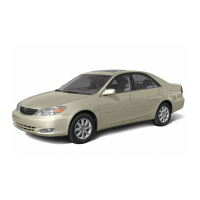
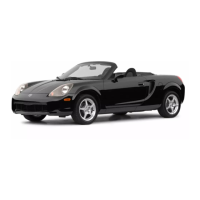


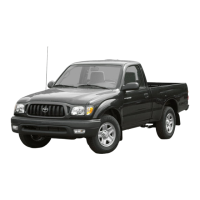
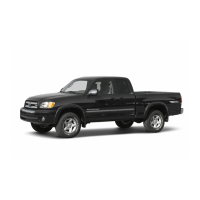
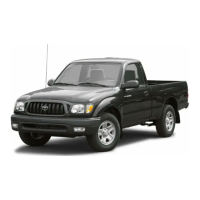
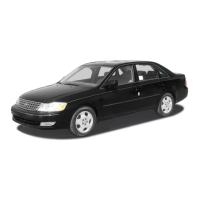

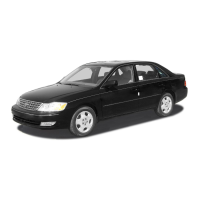


